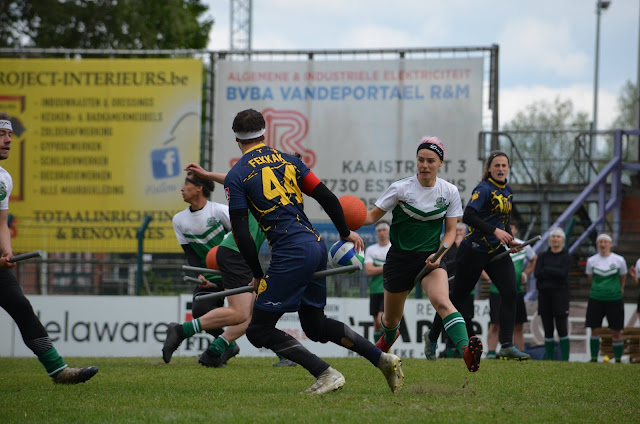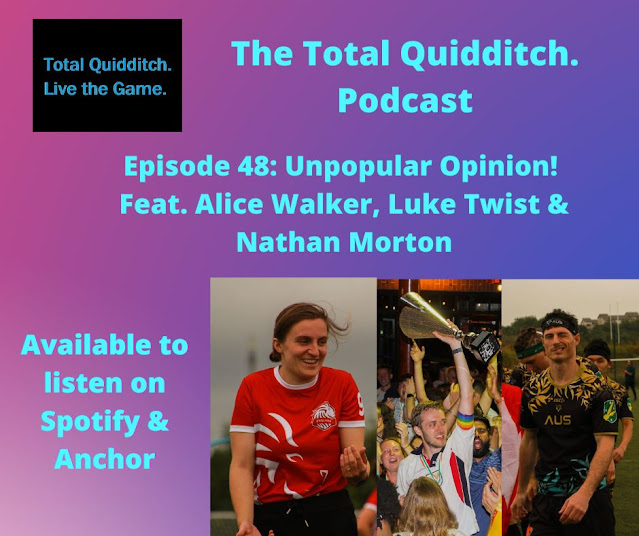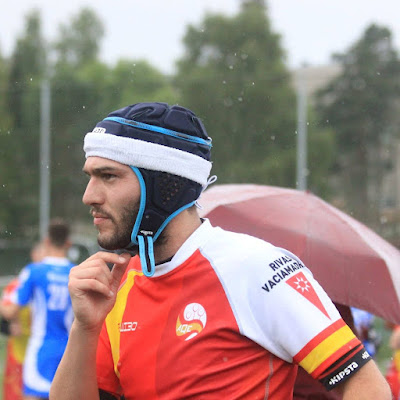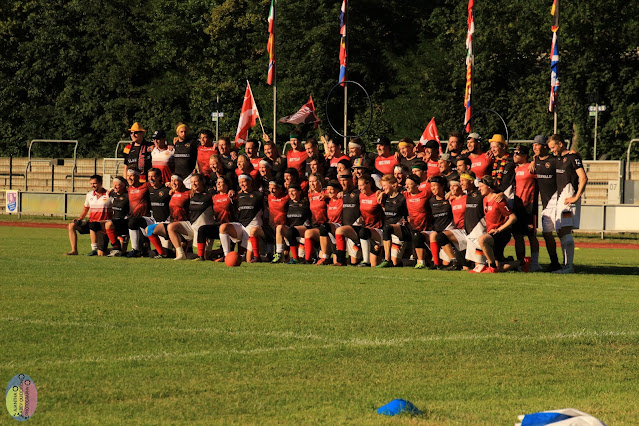Match Analysis: EQC 2019 Quarter Final- Titans Paris vs Antwerp QC
Hello and happy new year!
Firstly, apologies for the lack of content, I'm aware it's been a LONG time since I've published an article. The plan is to get back to producing at least one per month but as always, I can't promise anything.
So, to get things going in 2020, I thought I'd take a look at one of the biggest matches of 2019 in European quidditch. Rivalries are undeniably what makes sport so compelling and in quidditch they don't come much bigger than the one between Titans Paris and Antwerp QC A. The two sides have faced off against each other on multiple occasions over the past few years not just as themselves but also as France and Belgium respectively with their players making up much of the core of both national teams. With both teams topping their groups after Day 1, sadly they were fated to meet prematurely in the quarter final rather than meeting in the EQC final like they did in 2016 and 2018. Considering the Titans contingent have overall dominance in the head-to-head between them and Antwerp, what's significant about this game is that it's the first time the Dodos, or indeed anybody, had managed to take the Titans out of snitch range only for them to claw their way back into the game and grab a dramatic win in overtime. There are plenty of things to discuss from such a high quality match although I'm going to focus mostly on the beater play and snitch on pitch game management.
 |
| Antwerp beater Elisabeth Reyniers (13) presses out at Titans Paris captain Sami Fekkak (44) Photo Credit- Guillaume Faniel |
Stats mentioned are created by yours truly based on the footage available. There may be an element of human error involved.
Final Score- Titans Paris 170**-140°° Antwerp QC
Goals- Valentin Farese X4 Seppe De Wit X4
Mikkel Poisse X3 Nathan Wilputte X4
Albert Bregeault X2 Emile Aerts X3
Chaser Number 28 (Audrey?) Hanne Hermans
Sami Fekkak Hanne Porres
Assists- Valentin Farese X3 Seppe De Wit X7
Albert Bregeault X2 Nathan Wilputte
Mikkel Poisse Hanne Hermans
Snitch Catch (es)- Boris Martin, Mourad "Tarzan" Ghazi 2-0
Cards- 2(Both Yellows) 3 (All Yellows)
Turnovers caused by bludger-
2 (Both Etienne Pogu) 5 (Louis Lermytte X4, Elisabeth Reyniers)
Offensive Efficiency-
42.3% (11 goals from 26 offences) 50% (13 goals from 26 offences)
Goals from No Bludger Drives-
2 (100% success rate) 4 (100% success rate)
*= The timestamps used are the time on the Youtube video, not the game time shown on the top left of the screen
Absorb and Expand
Antwerp emerge from the first 18 minutes of the match decisively on top with a scoreline of 100-50, even holding a 60 point lead of 90-30 at the 14th minute mark (official game time, not video time). While not meaning to be overly simplistic, one key aspect of the game that helped create this early Antwerp dominance stems from the aggression and work rate of primary beater pairing Louis Lermytte (33) and Elisabeth Reyniers (13) versus Etienne Pogu (4) and Flora Giaquinto (22). The Belgian duo play with an 'Absorb and Expand' approach against their French counterparts. With bludger control, they split a defensive set into two parts. First of all, Lermytte sets up midway inside the Antwerp half to apply light pressure to the quaffle carrier while Reyniers is stationed within their keeper zone. Lermytte's positioning baits Pogu into making the beat on him however Lermytte anticipates this generally by throwing his bludger back to hoops at the right moment, rarely taking on the trade with Pogu. Lermytte then has the speed to outpace both Titans beaters as he races back to tap back in, allowing him to either retain his original bludger or make a play on the Pogu's thrown bludger which is now loose. Having absorbed the Titans' beater offence, Antwerp get the jump on the Paris beaters which allows them to then expand out towards the quaffle carrier, pressing with one beater either to force a bad pass or a turnover leading to a counter attack which they help support. Meanwhile in the quaffle game, the Dodos use captain Seppe De Wit (16) as primary point defender to contain a drive from the Titans' ball carrier (an option further discouraged by the deep positioning of beater Reyniers), Emile Aerts (12) picking up Val Farese (21) or captain Sami Fekkak (44) when they are off-ball while Nathan Wilputte (69) covers hoops and the remaining chaser (usually Hanne Hermans, 19, or Veerle Baumers, 61) covering another passing option. This defensive set up allows Antwerp to lock down the Paris attack for long enough so that their beaters can focus almost entirely on dealing with the pressure applied by the Paris beaters before then switching their point of emphasis to the quaffle. Some examples of this can be seen at 1:30 (Lermytte beats out Pogu after throwing back while Reyniers pressures quaffle, leads to an intercepted pass and counter attack), 4:18 (Lermytte throws back, missed beat from Pogu, Reyniers forces bad pass from Farese followed by an illegal reset from Fekkak) and 12:00 (Reyniers is beat by Pogu but throws back and taps in again, Pogu's bludger goes flying, Lermytte forces a reset back to Titans keeper Albert Bregeault, 13, followed by a turnover). All these examples vary slightly on the exact blueprint above but you can see the theory at work.
In fact, Lermytte was an absolute menace in this match, forcing 4 turnovers including that iconic head beat on Bregeault in open play at 9:50, the force of which could be heard way up in the stands of the stadium in Harelbeke.
Now let's compare what the Paris Titans beaters do when they have bludger control. Like Antwerp, the Paris beaters are cautious to risk the trade on their opponent's armed beater but instead both beaters sink back to within their keeper zone, looking to catch or deflect Antwerp's thrown bludger while throwing one of their own bludgers back to hoops in order to retain it. The key difference between the two sides is that when the Titans' beaters come out favourably in the beater exchange, they appear more reluctant to risk pressing out on the Antwerp ball carrier meaning that by the time they actually decide to commit to a press, the Antwerp quaffle players are aware of it and capable of shifting the quaffle away, unafraid to use their reset if they deem necessary. We can see this at 8:50 when Lermytte misses a beat on Pogu and his bludger goes all the way to the back of the Titans end of the pitch. It takes 10 seconds for Titans to commit to the press which De Wit and Wilputte have already identified long before it's actually happened and they're able to easily make a long reset back to their keeper zone. There are also similar examples at 22:55 and 24:57 although you could argue that Reyniers' positioning forces the Paris beaters to deal with her first before they can attempt any pressing opportunity.
After Titans call a timeout at 12:45, you can see their beaters switch up their approach. Against bludger control, Charles Rigoudy (91) applies physical pressure to one of the Antwerp beaters. This isn't necessarily to try and regain bludger control but more to force back the Antwerp beater defence and make it harder for them to apply pressure to the quaffle, in turn creating enough breathing space for the Titans quaffle offence to have a scoring opportunity either via a mid-range shot or a flat pass to a receiver. This results in Titans' goals at 16:00 (shot from Farese) and 19:15 (flat pass from Bregeault to chaser 28). However, there are also moments where this approach backfires on them such as 14:30 (De Wit steps into passing lane, intercepts and runs the length to score) and 15:05 (shooting opportunity created for Bregeault but he misses, Antwerp get a no bludgers counter attack and Wilputte sinks a mid-range shot) in which the success of the play comes down to the timing and accuracy of the shot or pass.
 |
| Antwerp's Louis Lermytte (33) squares up against Titans' Etienne Pogu (4)- A key battle throughout this match Photo Credit- Guillaume Faniel |
With Antwerp 50 points up going into snitch on pitch and bludger control, they are very much in the ascendancy and have been the better team for large portions of the match. In all likelihood, they should go on to win from here however it is a lapse in game management that proves to be their downfall. Based on the footage, I honestly don't believe this is a scenario they expected to find themselves in and really, who can blame them. No team has ever played this well against Titans to get into this situation and although Antwerp have been ahead by similar scorelines against other teams, Titans prove that they have the resolve and tactical nous to turn the game around.
Without bludger control and in need of goals, Titans are forced to trust in the abilities of Snitch Runner Vinzent Fröhlich to repel the Antwerp seeker while looking to force turnovers in the quaffle game in order to get into range to win or reach overtime. Within 2 minutes and 45 seconds of the seekers being in play, they manage to turnover the quaffle 3 times, score the 2 necessary goals and make the catch to take the match to overtime. Ruthless.
All 3 turnovers happen in similar circumstances. As Antwerp's primary ball carrying option, Seppe De Wit only real objective is to spend as much time in possession of the quaffle as possible in order to give time for his beaters to focus on the snitch game and for his seeker to catch for the win. Paris are very much aware of this and aim to apply pressure early to De Wit via Pogu, setting up higher up the pitch in order to be both a threat to the quaffle carrier and seeker (something we've talked about in a previous article ) with Farese at point and the remaining Titans quaffle players covering the passing options. With both point defender Farese and beater Pogu focusing on him, De Wit can't settle into his offence like he was able to during the seeker floor and with his passing options marked up, he is twice forced out of bounds by Farese (26:33 & 30:10) and once turned over by Pogu (28:55) causing a panicked scramble in the Antwerp ranks which Paris are able to exploit, in part thanks to them getting the favourable outcome on some very borderline refereeing decisions. Perhaps the use of the deep reset option utilised at points earlier in the game, coupled with a bit of beater support in the quaffle game would've helped to extend the Antwerp offensive sets long enough for them to have had a few more opportunities to catch the snitch while they were still out of range but considering how unpredictable the snitch on pitch period of a match can be, there's no guarantee they would've kept Titans out of range.
Paris are aided by the fact that their defensive seeker is none other than Boris Martin (2) - one of the most reliable seekers in French quidditch history. When out of snitch range, many teams end up using a player to defensively seek who is not renowned for their offensive seeking ability however that's not the case with Martin who is one of the Titans' main options, not to mention their tall and agile frame makes them a very capable defensive seeker. This means that once Titans pull back into range, they can go straight for the grab without having to make any adjustments to their lineup.
Once the game reaches overtime, both teams go goal-for-goal in the quaffle game with neither side really making an error while an intense battle in the seeker game ends with Mourad "Tarzan" Ghazi (10) catching the snitch with less than 20 seconds to go, breaking many Belgian hearts in the process. An exciting yet cruel climax to an epic contest.
 |
| Boris Martin dives for the snitch catch to force overtime. Photo credit- QuidPic.be |
Following this match, Paris went on to win their 4th EQC title in 5 years, beating Turkish sides ODTU Hippogriffs and METU Unicorns in the semis and final. While the chasing pack is growing in size, the question of which team can actually break the Titans' grip on the European crown remains unanswered for one more year. Come this year's tournament in Ghent this May, Parisian eyes will be firmly set on an historic threepeat while the other 31 teams will look to this game as proof that the Titans are there for the taking if they manage to play a complete game which will be entirely necessary in order to topple the French giants.
FP
#TQ
#LiveTheGame



Comments
Post a Comment